The NVIDIA GeForce GTX 1660 Super Review, Feat. EVGA SC Ultra: Recalibrating The Mainstream Market
by Ryan Smith on October 29, 2019 9:00 AM ESTMeet The EVGA GeForce GTX 1660 Super SC Ultra
Since this latest GTX 1660 series card launch is a virtual launch like the others, NVIDIA is once again sampling partner cards to the press. For the GTX 1660 Super launch, we received EVGA’s GeForce GTX 1660 SC Ultra, a relatively straightforward dual slot, dual fan card.
| GeForce GTX 1660 Super Card Comparison | ||||
| GTX 1660 Super (Reference Specification) |
EVGA GTX 1660 Super SC Ultra | |||
| Base Clock | 1530MHz | 1530MHz | ||
| Boost Clock | 1785MHz | 1830MHz | ||
| Memory Clock | 14Gbps GDDR6 | 14Gbps GDDR6 | ||
| VRAM | 6GB | 6GB | ||
| TDP | 125W | 125W | ||
| Length | N/A | 8" | ||
| Width | N/A | 2-Slot | ||
| Cooler Type | N/A | Open Air, Dual Fan | ||
| Price | $229 | $229 | ||
The EVGA GeForce GTX 1660 SC Ultra – or for the sake of brevity in this article, the EVGA SC Ultra – is pretty typical of dual fan cards for this price range and performance class. At just under 8-inches long, the card isn’t particular massive, and is just big enough to fit a pair of 90mm fans.
EVGA typically offers both reference clock (Black) and factory overclocked versions of their GTX 1660 SC cards, and the model we’re looking at is the latter, sporting an official boost clock of 1830MHz, 45MHz higher than the reference GTX 1660 Super specifications. Notably, the card’s base clock remains unchanged at 1530MHz, but since the card is turboing all the time anyhow, it’s the boost clock tells us what we need to know. By the numbers then, EVGA’s SC Ultra has a 2.5% GPU clockspeed advantage over reference cards, so it will perform just a bit better (and further close the gap with the GTX 1660 Ti), but not significantly so with such a mild factory overclock.
Meanwhile, it’s worth pointing out that while EVGA has cranked up the GPU clockspeed a bit, it doesn’t appear they’ve deviated from NVIDIA’s reference TDP this time. So unlike their reference clocked but TDP increased XC cards that we looked at earlier this year, the SC Ultra doesn’t have any more power headroom to play with than reference cards. Thankfully for EVGA the GTX 1660 series cards haven’t been terribly TDP-constrained to begin with – we regularly beat NVIDIA’s official boost clocks – but it does mean that the card is riding on the fact that it’s clocked higher at any given voltage, which is essentially an efficiency play.
Digging down further, the SC Ultra is equipped with a fairly typical aluminum heatsink with vertical fins, and a pair of heatpipes running through it. The heatpipes are connected to the TU116 GPU via a copper (or copper-plated) baseplate, with the heatpipes and baseplate transferring heat into the heatsink proper. EVGA is also providing direct cooling for the 6 GDDR6 chips surrounding the GPU, using thermal pads to connect them to the heatsink.
Speaking of cooling, unlike their XC cards that we’ve looked at earlier this year, for their SC cards EVGA has implemented zero fan speed idle functionality, so the card’s fans will cut off when the card is idling at a low temperature. This is an increasingly common and always appreciated feature for video cards, as it allows cards to be effectively silent at idle or under light workloads.
Elsewhere, on the back of the card we find an EVGA backplate. It’s still uncommon to see backplates among non-premium midrange cards like this, so EVGA is in fairly rare company. In the case of the SC Ultra however, it’s also necessary, as the heatsink is only mounted to the PCB directly around the GPU, so the backplate is needed to keep the card and its PCB from flexing.
For power, the card relies on an 8-pin external PCIe power cable, as well as PCIe slot power. From a practical perspective this is overkill for a card that only has a 125W TDP – a 6 pin connector should work just fine here – but it’s consistent with NVIDIA’s requirements for their other GTX 1660 cards.
Finally for hardware features, for display I/O we’re looking at EVGA’s usual GTX 1660 setup of a DisplayPort, an HDMI port, and a DL-DVI-D port. While DVI ports have long been banished from high-end cards, they still sometimes show up on midrange cards so that they can be directly used with DL-DVI monitors that are still out in the world. The tradeoff, as always, is that the DVI port is taking up space that could otherwise be filed by more DisplayPorts, so you’re only going to be able to drive up to two modern monitors with the SC Ultra.
As for software, EVGA of course includes their latest EVGA Precision X1 software. Among its many features, Precision X1 allows modifying the voltage-frequency curve and scanning for auto-overclocking as part of Turing’s GPU Boost 4. Of course, NVIDIA’s restriction of actual overvolting is still in place, and for Turing there is a cap at 1.068v. As far as overclocking software goes, EVGA’s software remains one of the best NVIDIA overclocking tools on the market, and it’s little surprise that when NVIDIA wants to show off new overclocking features, they frequently turn to EVGA to deliver the necessary software.
Finally, on a quick housekeeping note, I should point out that for today’s review we’re actually on our second SC Ultra. While the original card sampled by NVIDIA worked just fine for testing from a performance perspective, under sustained loads it got hotter and louder than any 125W card should. EVGA has since swapped it out for a second card, which dialed back the temperatures by several degrees, as well as a few decibels of noise. While it’s still not a quiet card – as we’ll see in the power/temperature/noise section of the review, our second sample was a lot more reasonable and is what we’d expect to see for a mid-TDP dual fan card.


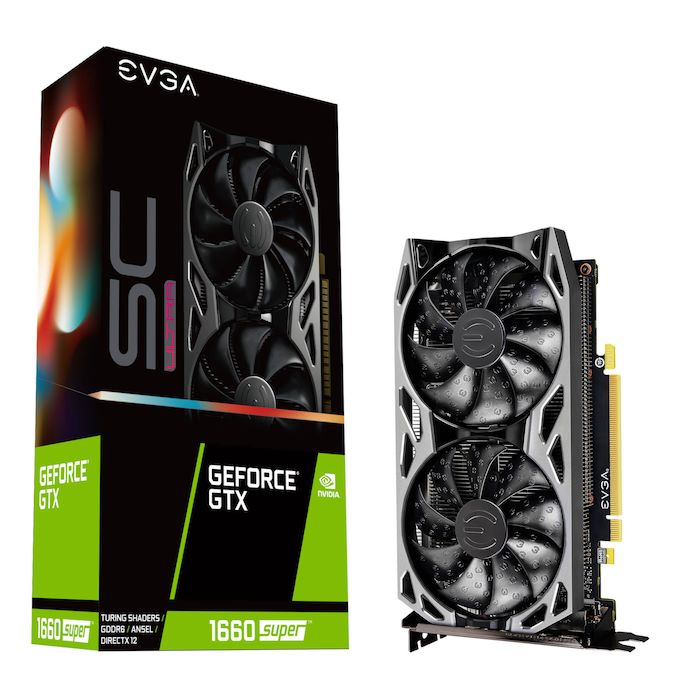
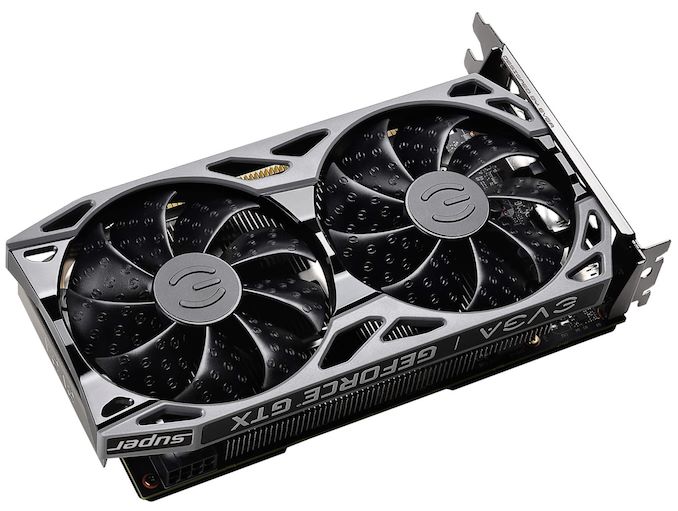
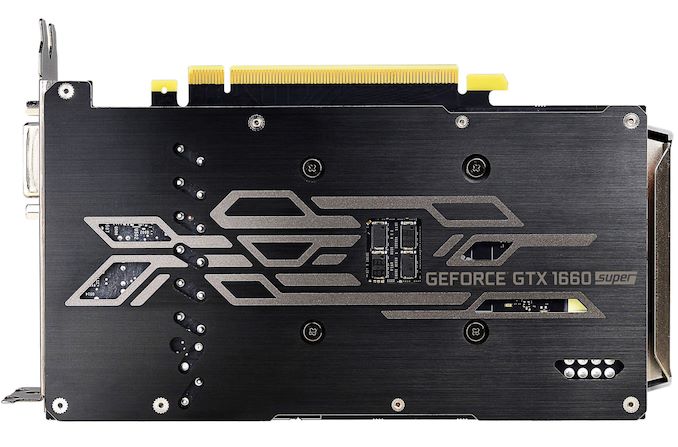
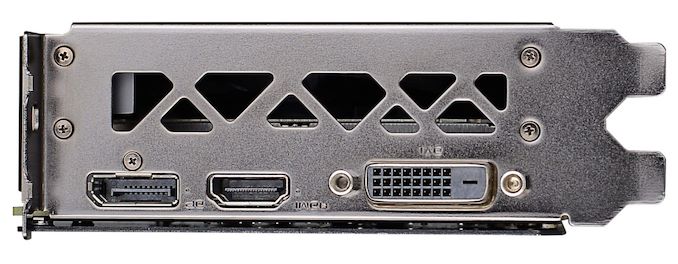
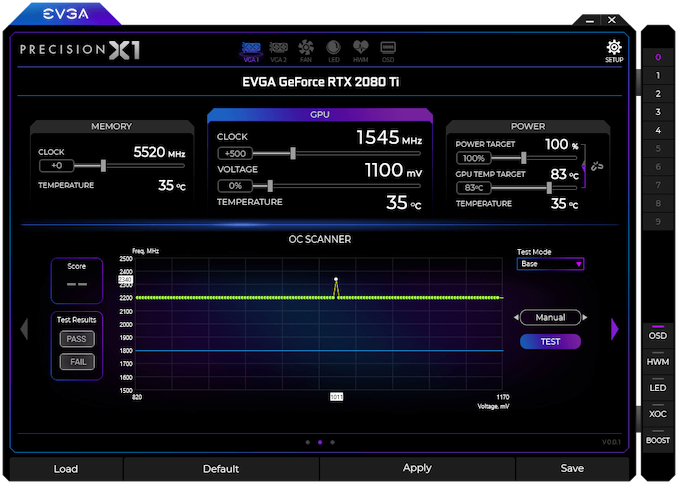








65 Comments
View All Comments
Holliday75 - Wednesday, October 30, 2019 - link
I picked up the same Aced Predator during that Prime deal. It outperforms my expectations. I went on a whim without much research because I wanted a basic gaming laptop while traveling for business. It runs my higher end games better than I expected.Shlong - Thursday, October 31, 2019 - link
Yes, it is quite fast. I also put in an extra 1TB SSD in there and undervolted the CPU even more. I can run all the games on high/ultra. The 144hz IPS panel looks great too with little backlight bleeding.limitedaccess - Tuesday, October 29, 2019 - link
Have you considered doing tear downs when looking at AiB cards?For instance another reviewer (Tom's) also had this 1660 Super model and because they did a tear down it was found that it had no heatsink contact of any type over the VRMs, which is likely why a higher fan speed (and therefore noise) is required for this model even with relatively lower GPU temperatures as you are completely relying on the air to cool the VRMs.
While EVGAs warranty service (at least in US/Canada) is lauded their actual designs seem to always have rather questionable elements.
eastcoast_pete - Tuesday, October 29, 2019 - link
Agree on this making the 1660 Ti a bad deal. A way for NVIDIA to keep the Ti attractive would be to give the Ti 8 GB of GDDR6 RAM, at the same speed or higher as the 1660 Super. Any rumors?maroon1 - Tuesday, October 29, 2019 - link
It has better performance per dollar than GTX 1660 Ti and even slightly better than GTX 1660Not bad card
Showtime - Tuesday, October 29, 2019 - link
Super cards with 90%+ of the performance of the next level cards for the same price? Just shows that whole line could have come in at a much lower price point, and been profitable. NVIDIA has been getting away with murder since they saw what miners drove pricing to on the last gen graphics cards.The_Assimilator - Wednesday, October 30, 2019 - link
"NVIDIA has been getting away with murder since they saw what miners drove pricing to on the last gen graphics cards."And so has AMD. Did you have a point?
AshlayW - Tuesday, October 29, 2019 - link
RX 590 still holding its own, in Exodus; the only game on your suite that I actually play, it manages to match this card. And has 2GB more vram for $30 less.I know this is a bit off topic, but I recently upgraded my 590 to a 5700, and this review actually makes me laugh just how much faster the 5700 is to the 2060, for the same or less money. I don't even know why 2060 is selling, because its RT credentials are questionable, too.
Alistair - Tuesday, October 29, 2019 - link
The RX 5700 and 5700 XT are fantastically powerful for the money, basically a 1080 + 10 percent for $350 or a 1080 Ti - 10 percent for $400. Now that partner models are out, you can get a Gigabyte 5700 XT that maxes at 61 degrees at 2000rpm, the coldest GPU I've ever had.Problem: it crashes randomly once every 2 hours in Chrome, so was returned. Sorry AMD, it has been 3 months since release already. Gotta do better with software. RTX has been out for a year already and is mostly bug free by now.
Alistair - Tuesday, October 29, 2019 - link
btw doesn't mean i'm going to go out and waste money on an RTX card's terrible perf/dollar, but it does mean I'll just sit and wait for something new or 2 more driver releases before trying to buy a 5700 XT again. Not going to waste $200 more CAD to get the RTX version that is the same speed.